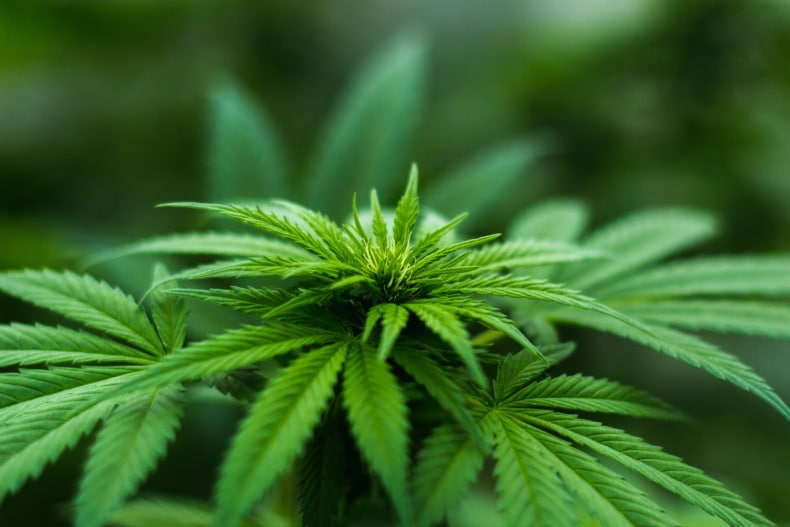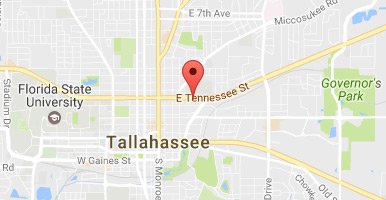- DUI
- Criminal Defense
- Florida DUI
- Traffic Offenses
- Drug Charges
- Marijuana Charges
- Violent Crimes
- Domestic Violence
- Temporary Injunctions
- Weapons Charges
- Theft Crimes
- White Collar Crime
- Juvenile Offenses
- Sex Crimes
- Violation of Probation
- Early Termination of Probation
- Seal or Expunge Criminal Record
- Criminal Appeals
- US Federal Offenses
- Misdemeanor Charges
- Felony Charges
- Co-Defendant Cases
- College Student Defense
- College Student Hearings
- FSU Students
- FAMU Students
- Florida Panhandle Arrests
- Extradition to Florida
- Bench Warrants / Warrants
- Emergency Bond Hearings
- Gambling Charges
- Drone Arrests
- Marsy’s Law
- UAS Infractions
- Introduction of Contraband
- Lying to Police
- Locations
- Case Results
- Our Firm
- Media
- Resources
- Blog
- Contact Us
The Florida Medical Marijuana Legalization Initiative: Is it Final Step for Medical Marijuana, or One More Hurdle on The Long Track to Legalization?
December 9, 2016 Brent Marshall Drug Charges Social Share
On November 8th 2016, over six and a half million Floridians voted in favor of Amendment II, “Use of Marijuana for Debilitating Medical Conditions.”[1] The electorate supported the measure 71% to 29%,[2] easily satisfying the 60% needed to pass.[3] Here in Leon County, the electorate voted in favor of the amendment at an incredible 50% margin.[4] The Florida Constitution mandates that a passed amendment such as this one is to go into effect “as an amendment to . . . the constitution of the state on the first Tuesday after the first Monday in January following the election.”
[5] While it is certainly appropriate for millions of Floridians to rejoice in the fact their voice has been heard, it leaves an obvious question, what next? The amendment will go into effect January 10th, but there are multiple hoops and boundaries to be jumped through and crossed over before the November vote can translate into Marijuana based treatments of illness. Patients like five-year-old Abby Muszynski may finally be able to obtain the help they need, when nothing else has worked, some semblance of a normal life.[6] Abby was unable to find any drugs that would stop her seizures, until legal medical marijuana was given to her, the first solace she has found.
[7] Even with this medicine though she continued to have two grand mal seizures a week, preventing any meaningful growth and development, she simply needed more, such as that authorized by Amendment 2,[8]but the timeframe of this help will be at the whim of the Florida Department of Health, the legislature, and the courts. No one believes that the necessary infrastructure will magically be installed a mere two months after the amendment vote, the actual timeframe however is now being evaluated by experts. Some aspects of the upcoming implementation are thankfully codified in the amendment itself.
[9] The Department of Health has six months after installation of the amendment to promulgate rules for medical marijuana use going forward.[10] Further beyond this deadline is a nine-month cut off before the Department is constitutionally obligated to begin offering: patient and caregiver identification cards; and registering medical marijuana treatment centers.[11] If either of these deadlines are not met the amendment creates judicial standing for any Florida citizen to seek judicial relief in the form of compelled compliance. Non-compliance could technically go overlooked, but with over two and a half million dollars in contributions stemming from the Morgan Law Firm alone, there will undoubtedly be a citizen with the means and the desire to fight any kind of regulatory stalling by the Department of Health.
[12] Finally, there is a provision in the statute which allows the legislature to weigh in on both the substantive law of medical marijuana use and the implementation.[13] This clarifies that the amendment does not prevent the legislature enacting laws, but reemphasizes that they must not conflict with the article.[14] The legal framework of the amendment is easy to follow, the Department of Health must do something in the next six months, and must be close to ready for practical application after nine months, while the Legislature can do very little to derail it. The practical application of these now-theoretical regulations and implementation is anything but straightforward though. Now Floridians are wondering what this legal framework is going to look like and how it will affect everyone from a dying marijuana patient already taking advantage of the limited law in place, all the way to those individuals looking to invest in the new system. Prior to November, twenty-eight other states and the District of Columbia had begun implementing medical marijuana laws.
The practical application of these now-theoretical regulations and implementation is anything but straightforward though. Now Floridians are wondering what this legal framework is going to look like and how it will affect everyone from a dying marijuana patient already taking advantage of the limited law in place, all the way to those individuals looking to invest in the new system. Prior to November, twenty-eight other states and the District of Columbia had begun implementing medical marijuana laws.
[15] These states have seen a wide variation of successes and stalled plans.[16] For example, the most recent law to be passed in Washington state went into effect on July 1, 2016, aiming to integrate the medical and recreational markets. The Washington Department of Health has already established the rules for these specialty clinics and regulations to create one large industry.
[17] Washington is not a direct analogy to Florida though, Washington passed an adult-use recreational law in 2012. These stores started opening in 2014 and the new law was passed to create a medical marijuana endorsement that the businesses could apply for.
[18] Alternatively, in Florida there has been a medical marijuana bill, the “Compassionate Medical Cannabis Act of 2014” outlines the system currently in place for medical marijuana use.[19] The “Compassionate Medical Cannabis Act” shows the different approach to legalization of marijuana use that Florida has adopted compared to states such as Washington.
Florida, prior to the new amendment’s future adoption only authorizes use for patients who suffer from cancer, or a condition that creates seizures or severe muscle spasms, and only approves the use of low-THC cannabis.
[20] The doctor’s prescribing this low-potency marijuana are also forced to jump through a series of hoops; completing courses and examinations,[21] submitting a quarterly report to the University of Florida College of Pharmacy,[22] and must treat the patient for a full three months before considering the treatment.
[23] These roadblocks in place show the vastly different systems in place, and emphasize the fear that the current political leaders will not implement this in way consistent with States such as Washington. The Florida Department of Health’s primary “track record” that can be used to predict the new law’s course will be the implementation of the “Compassionate Medical Cannabis Act.”[24] The implementation of the Compassionate Medical Cannabis Act was initiated with the creation of the “Office of Compassionate Use” in July of 2014, but cultivation authority was not authorized until February of 2016, a full 18 months later.
Dispensing of medical marijuana did not formally commence until July 22nd, a full two years after the process began.[26] Amendment two clearly will not take this long to follow through on; the groundwork for implementation is already in place, and there are the built-in timelines present. The current regulations should shed some light on what kind of medical marijuana regime the Department of Health will create, with commenters confidently asserting it will follow the form of strict states such as New York, Illinois and Nevada, rather than notoriously liberal states such as California.
The current regulations should shed some light on what kind of medical marijuana regime the Department of Health will create, with commenters confidently asserting it will follow the form of strict states such as New York, Illinois and Nevada, rather than notoriously liberal states such as California.
[27] In New York, potential producers must, in addition to a litany of small requirements: pay $210,000 ($10,000 of which is non-negotiable), be able to produce enough product, prove knowledge to produce, show a plan to implement security, pass a background check and show that all equipment is paid for or accounted for.[28] In Illinois, similar monetary and safety requirements are in place, but the state only issued 60 dispensary licenses to 211 applicants and 21 cultivation licenses to a pool of 158 applicants.
[29] Meanwhile Nevada, described as even more strict than the current “low-THC” system in Florida, has a rigorous and complicated point system and only allowed applications for a total of 13 days back in 2014.[30]The Department of Health will have near-full control over how strictly this law is implemented. The Department of Health will need to authorize growers and dispensaries, they could choose to expand this authorization over what is currently allowed, but if the Department of Health limits it to the six nurseries currently in business,
[31] they will not have to promulgate new rules for this expansion. Even if the Department of Health chooses to engage in negotiated rulemaking akin to the 2014 law’s implementation these nurseries will likely hold onto to a substantial amount of negotiating power in that forum.[32] It is also incredibly likely that the Department of Health will even choose to enter negotiated rulemaking for the authorization and licensing process for Medical Marijuana Treatment Centers under the new law, and it is likely that these nurseries will have a substantial say over their future business partners in the vertical hierarchy.
[33] The medical marijuana certifications will ultimately be decided by the Department of Health whether they give up some or all of this control to the nurseries or not. During implementation of the 2014 law they originally came up with a lottery system which was abolished after judicial review, and then moved on to a scorecard system akin to Nevada, which survived judicial challenge.
[34] It is likely that some kind of scorecard system will be used again, but that is of course just a guess, as the Department of Health’s decision is still at least 6 months from release. Regardless of the decision though, it will be on a much quicker timeline because of the mandatory provisions, meaning that it is likely difference will go to a system which has already been challenged in court. There is also a matter of fees, unlike the other strict states, Florida required a $60,063 non-refundable fee in order to apply to grow the Marijuana under the current system, this could be more or less depending on the whims of the Department of Health.
There is also a matter of fees, unlike the other strict states, Florida required a $60,063 non-refundable fee in order to apply to grow the Marijuana under the current system, this could be more or less depending on the whims of the Department of Health.[35] Some argue that this fee will likely be lower because the requirements to operate a Medical Marijuana Treatment Center will invariably be lower than a nursery, leading to more applicants, this is just a guess though, as the Department of Health will have the ability to make this process as easy or as difficult as they see fit.
[36] Unfortunately, there is no easy answer, no crystal ball to figure out how the state agencies are going to regulate patients’ futures. Some have already had to flee the state, such as five-year-old Abby.[37] Abby finally has a normal, seizure-free life thanks to full THC medical marijuana she receives in her new home of Colorado.
[38] Someday help such as this should not require uprooting life, moving across the country in a medical transport and leaving behind teenage siblings.[39] This is the promise of Amendment 2, it is now up to the government to uphold this law and make sure that Abby’s of the future don’t have to go through this ordeal. The rulemaking procedures will likely be a public affair, and any legislation will come from representatives from across the state, six and a half million Floridians voted for medical marijuana to be legal. Those who truly believe in the cause need to keep an eye out for these rulemakings, and hold congressman accountable, for some, such as Abby, this law is a matter of life-and-death, and it should be treated as such.
The rulemaking procedures will likely be a public affair, and any legislation will come from representatives from across the state, six and a half million Floridians voted for medical marijuana to be legal. Those who truly believe in the cause need to keep an eye out for these rulemakings and hold congressman accountable, for some, such as Abby, this law is a matter of life-and-death, and it should be treated as such.
[1] Florida Election Watch – Florida Division of Elections, Amendments, https://www.nytimes.com/elections/results/florida-ballot-measure-2-expand-medical-marijuana (last visited May 9, 2018) (6,518,919 voted for the measure). [2] Id. [3] Fla. Const. art. XI, section 5(e). [4] Supervisor of Elections, Leon County, 2016 General Election – Official Results http://enr.electionsfl.org/LEO/Summary/1601/ (last accessed Dec. 8, 2016) (113,919 Leon County voters were in favor of the amendment, with 26,854 against). [5]
Id. [6] Elizabeth Cohen, Health care refugees: Medical marijuana and new hope, CNN – Health (Nov. 30, 2016 3:23PM), http://www.cnn.com/2016/11/28/health/health-care-refugees-part-2/. [7] Id. [8] Id. [9] Fla. Const. art. X, section 29(d)(1) (2017). [10] Id. [11] Id. art. X, section 29(d)(2) (2017). [12] Florida Division of Elections, Committee Campaign Finance, (accessed Nov. 29, 2016). [13] Fla. Const. art. X, section 29(e) (2017). [14] Id.[15] Marijuana Policy Project, Medical Marijuana Program Implementation Timelines, https://www.mpp.org/issues/medical-marijuana/state-by-state-medical-marijuana-laws/medical-marijuana-program-implementation-timeline/ (last visited May 8, 2018) (including: Alaska, Arizona, California, Colorado, Connecticut, Delaware, D.C., Hawaii, Illinois, Maine, Maryland, Massachusetts, Michigan, Minnesota, Montana, Nevada, New Hampshire, New Jersey, New Mexico, New York, Ohio, Oregon, Pennsylvania, Rhode Island, Vermont, and Washington; all of which can be used as a comparative snapshot of what this regulatory struggle can look like, either at an earlier or later stage of development). [16] Id. [17] Washington State Department of Health, Medical Marijuana, http://www.doh.wa.gov/YouandYourFamily/Marijuana/MedicalMarijuana/RulesinProgress (last visited on Nov. 29, 2016). [18] Medical Marijuana Program Implementation Timelines, Supra note 15. [19] Fla. Stat. § 381.986. [20] Id. § 381.986(2). [21] Id. § 381.986(2)(c). [22] Id. § 381.986(2)(g). [23] Id. § 381.986(2)(b). [24] Hilary Bricken, Hazy Days Ahead? What We Don’t Know About Florida’s New Medical Marijuana Law, Above The Law (Nov. 28, 2016, 4:20 PM), http://abovethelaw.com/2016/11/hazy-days-ahead-what-we-dont-know-about-floridas-new-medical-marijuana-law/. [26] Id. [27] Hilary Bricken, Florida Legalizes Medical Marijuana, So Now What? Here’s the 4-1-1, Canna Law Blog (Nov. 9, 2016), http://www.cannalawblog.com/florida-legalizes-medical-marijuana-so-now-what-heres-the-4-1-1/. [28] Ryan Malkin, New York Cannabis Licensing: The Basics, Canna Law Blog (Apr. 30, 2015), http://www.cannalawblog.com/new-york-cannabis-licensing-the-basics/. [29] Illinois Cannabis Applications: From The Front Lines, Canna Law Blog (Sept. 25, 2014), http://www.cannalawblog.com/from-the-front-lines-il-dispensary-applications/. [30] Hilary Bricken, How To Get A Nevada Marijuana License. It Ain’t Easy, Canna Law Blog (June 2, 2014), http://www.cannalawblog.com/better-put-up-the-points-for-a-nevada-marijuana-license/. [31] Bricken supra, note 24. [32] Id. [33] Id. [34] Id. [35] Id. [36] Id. [37] Cohen, supra note 6. [38] Id.[39] Id.











